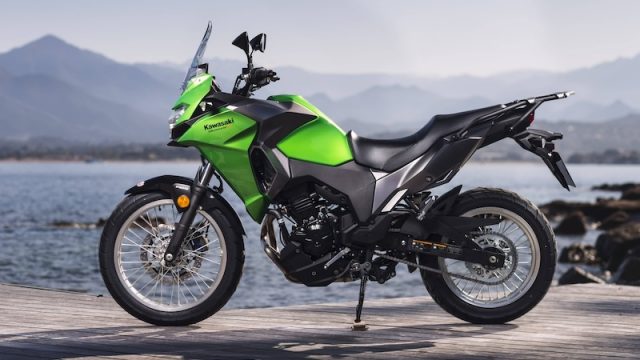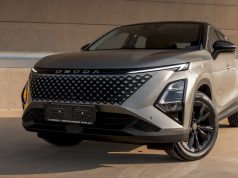The market for small and mid-sized adventure tourers is growing at a healthy pace. A pioneer of this genre is the Kawasaki Versys-X 300. Having made its debut in 2017, is it still worth a look? Barry Swart got reacquainted.
Don’t let the “300” fool you. The Kawasaki Versys-X 300 is a motorcycle that delivers beyond expectations. This twin-cylinder adventurer packs a lot of capability and fun into a fairly budget-friendly package.
First impressions in the city
Riding a BMW F 800 GS for over five years now, I was surprised that the Versys-X 300 did not feel inadequate compared to the German light tourer.
The Kawasaki is quick off the line, and with a very comfortable, elevated ride height, it breezed through Cape Town’s peak-hour traffic.
The Versys-X 300 has the same 296cc parallel twin that made the Kawasaki Ninja 300 so popular. In the X its output is 29,3 kW at 11 500 rpm and 25,7 Nm at 10 000 rpm. Yup, it’s a right little screamer.
The reward for giving it the beans is a quick getaway from standstill. In highway traffic and higher gears it lacks instant power for overtaking – not surprising given its modest 296cc.
Even without the surprisingly good off-road capability (more on that later), the Versys-X 300 would be a rewarding bike to own, even if used for commuting only.
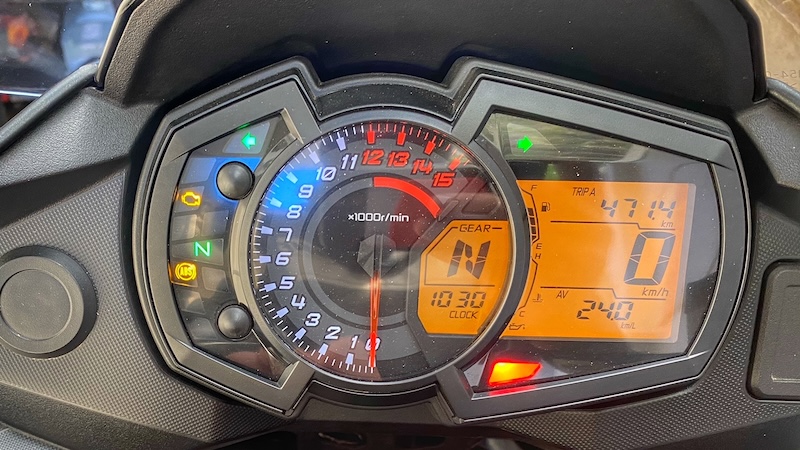
Equipment
The instrument cluster is well laid out, with no settings to be distracted by. It’s just point and shoot on any surface. The gear indicator (not always a given on a smaller bike) is useful at higher speeds, when the wind noise starts drowning out the engine.
The feel and action of the clutch is commendable, enabling really smooth and quick shifts through the six-speed gearbox. This was particularly useful in urban conditions, but also on technical off-road sections.
All round, it’s a pretty good looking machine, and the factory screen offered more shelter than expected.
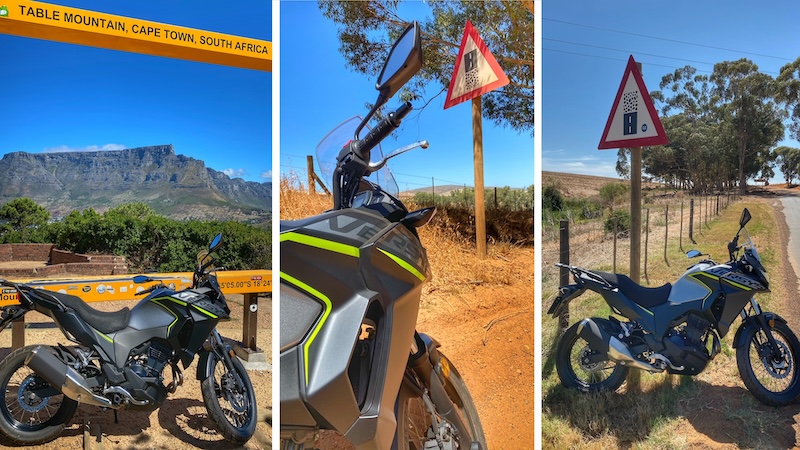
On the open road
For all its agility in 16:30 Cape Town city traffic, this is not a fast highway cruiser. The high-revving engine (7 000 rpm at 100 km/h) produced vibration that I found uncomfortable at times. Even before reaching 9 000 rpm, it’s already screaming, with plenty of headroom left on the rev-gauge.
If you do intend to cover big distances, you’ll find the Versys-X 300 happily cruises at 120 or even 130 km/h. I’m used to the low-revving nature of my BMW, but riders used to rev-happy small-capacity engines will have no issues riding the X cross country.
Similarly impressive was the ABS braking. I was reassured that I would avoid the otherwise inevitable from 100 km/h when there was little room for negotiation.
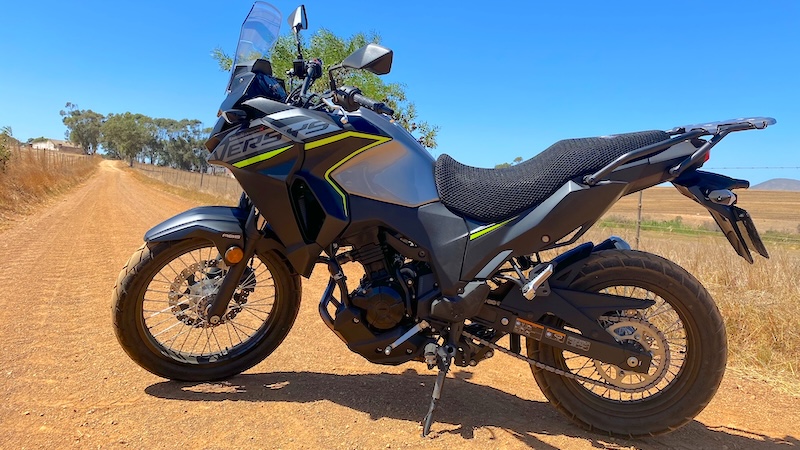
Dirt riding and touring
Off-road, the Versys-X 300 proved its worth as a genuine dual-purpose machine. Even with the ex-factory tires, it generated just the right amount of thrills and reassurance for a rider dipping their toe into adventure riding.
Solid build quality was evident in the absence of flapping or vibration noise from the panels, even on heavily corrugated sections. Standing up on the foot pegs gave the sensation of a much bigger bike underneath me. The raised handlebars are within comfortable reach, even for my lofty frame of over 6’1” (1,85m).
Like most bikes in this class, the Versys-X 300 has a 19” front wheel.
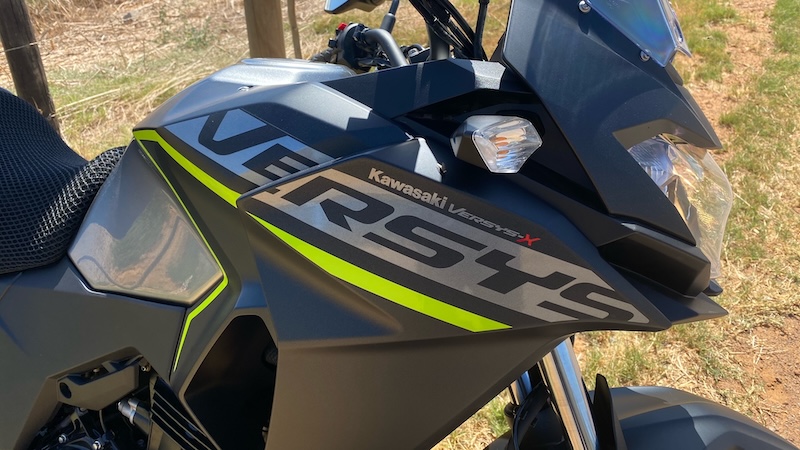
As for its touring capability, I did get the sense that it would be great with a tent and sleeping bag strapped on for a one-nighter, but not much else! While pillion seating is standard, I think a passenger, along with additional luggage, might be too big an ask of the Versys-X 300.
There is so little to fault, as this really is a go-anywhere, do-anything, entry-level sensation. Just two aspects spring to mind. I got the test bike with a full 400 km on the clock. The fact that my friends at Mad Macs had already fitted a comfier air-flow seat cover to the demo bike, made me curious. Yes, without it the seat is not a comfortable one.
Given that the fitment of a superior seat is a quick fix, I don’t see the standard seat as a deal breaker. Also, it’s unlikely that I would cover 500 km daily for a week on end if I owned this bike.
A bigger issue is that it’s impossible to disengage the ABS when riding gravel roads. For many, this functionality is essential.
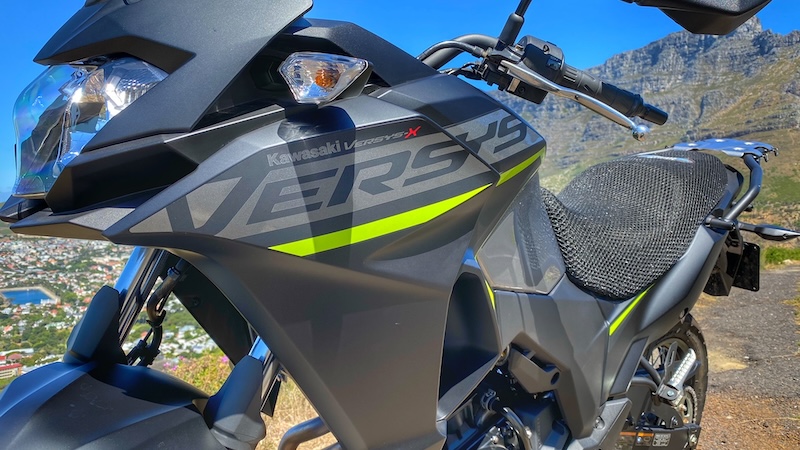
Does it still have what it takes?
The Kawasaki Versys-X 300 is up against merciless younger competitors, but it can stand its ground in some respects.
The powerful KTM 390 Adventure SW (32kW / 37Nm), also with spoked wheels, is arguably the most capable in this class, but it’s priced at a hefty R126 900.
The Zontes ZT 310-T2 (26kW / 30Nm) is an excellent, rock-solid small adventure bike and a bargain at only R94 900, crash bars and LED headlight included.
The engine capacity of the Suzuki V-Strom 250 SX is only 249cc (19kW / 22Nm), but it’s a steal at R59 750. It has alloy wheels.
The engine in the Hero Xpulse 200 and Xpulse 200 Rally (13.4 kW / 17 Nm) has an even smaller displacement – just 199.6cc. It has, however, received praise from the media for its off-road ability. Its cruising speed is around 100 km/h. The Xpulse is priced at R49 999 and the Xpulse Rally is R59 499. Both have spoked wheels.
Honda brings two desirable contenders to the game. Firstly, it fields the much-loved CRF 300 L (20 kW / 26.6 Nm), which is more of a ‘funduro’ than an adventure bike. It carries a price tag of R92 999 and rides on spokes.
Secondly, Honda has recently introduced the CB 500 X. This bike’s 471 cc liquid-cooled parallel twin makes 35 kW at 8 600 rpm and 43 Nm at just 6 500 rpm. At R122 399, it costs R4 500 less than the KTM 390 Adventure SW, but won’t be a match for it on the rough stuff.
BMW’s website has the price of its G 310 GS (25kW / 28Nm) as “from R114 300”, meaning optional extras will up the price. The baby GS has alloy wheels and is probably the most road-biased of the bunch. A strong selling point is its five-year warranty.
The SYM NHT 300 (17.5kW / 22.5Nm) offers amazing value for money at R59 995. If that’s not enough, it also boasts engine protection bars, full LED lighting, and spoked wheels.

The verdict
For someone looking to get into any kind of motorcycling, this bike is a winner. Whether it’s the daily run to the office or away for a dirty weekend in the dust, it offers more than enough thrills both on and off road.
It’s not particularly expensive, but it does face strong competition from the more affordable Zontes ZT 310-T2, SYM NHT 300, and the Honda CRF 300 L.
The Kawasaki Versys-X 300 scores 4 out of 5.
4.0 out of 5.0 starsSpecifications of the Kawasaki Versys-X 300
- Engine: 296cc, liquid-cooled, 4-stroke parallel twin
- Transmission: 6-speed, clutch type
- Power: 29.3 kW at 11 500 rpm
- Torque: 25.7 Nm at 10 000 rpm
- Weight: 175 kg
- Seat height: 845 mm
- Ground clearance: 180mm
- Brakes: discs front and rear, ABS
- Fuel capacity: 17 litres
- Fuel consumption: 4.1ℓ/100km (Kawasaki’s figure)
- Front suspension: 130mm, non-adjustable
- Rear suspension: 148mm, adjustable (pre-load only)
- Price: R104 995 (Slightly older imports are available for as little as R90 000)
Source: kawasaki.co.za


